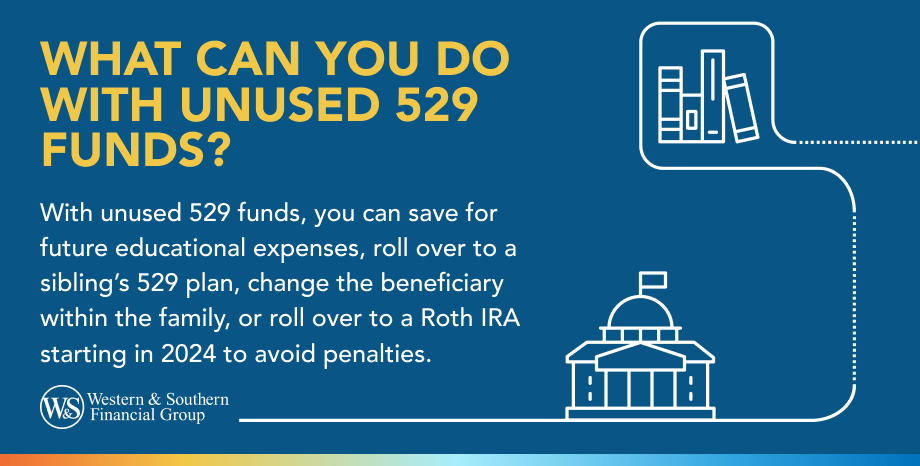

Table of Contents
Key Takeaways
- Unused 529 funds may be subject to federal income tax and a 10% penalty, except for amounts equal to any scholarships received.
- 529 funds can be used for qualified education expenses like room and board, books, supplies, technology, and private K-12 tuition.
- To avoid penalties, unused 529 funds can be saved for graduate school, transferred to another family member's 529 plan, or you can change the beneficiary.
- There are no time limits on withdrawing 529 funds - you can wait between undergrad and grad school without affecting savings.
- Knowing your alternatives for unused 529 funds can help avoid penalties and support overall family finances.
When it comes to saving for college options, 529 funds can be an effective way to put aside money for your kid's higher education while taking advantage of potential tax deferrals. But the future is uncertain, and if you don't ultimately need all of that money, you may end up with a penalty on your savings. There are alternative, penalty-free uses for the funds in your 529 plan if your child chooses not to go to college, or doesn't use all of those funds up.
Penalties for Unused 529 Funds
In some cases, unused 529 funds are subject to both federal income tax and a 10 percent penalty fee.
There's an exception: If part of those funds go untouched because your child received a scholarship, you won't have to pay any penalty on funds equal to the amount of the scholarship. If the tax-free scholarship was $5,000, you can cash out $5,000 without getting dinged with a fee. You'll still need to pay taxes on the fund's earnings. If part of those funds go untouched because your child received a scholarship, you won't have to pay any penalty on funds equal to the amount of the scholarship.
Uses for 529 Funds Beyond Tuition
The assets in a 529 college savings plan can be used for a number of qualified education expenses aside from tuition, including:
- Room and board fees (off-campus housing counts)
- Books and supplies (only textbooks listed as required reading count)
- Technology (computers, electronics, software and internet services that are required for a given course or school)
- Eligible expenses for trade and vocational schools (same as four-year college or university expenses listed above)
- Private school tuition (kindergarten through 12th grade and up to $10,000 per student per year)
- Student loan repayment (beneficiary of a 529 account is allowed to pay off up to a lifetime limit $10,000 in student loans)
Expenses that are not eligible include:
- Discretionary spending (entertainment, travel and transportation costs)
- Cell phone plans and nonessential gadgets
- Health insurance
Expenses can't be more than the estimate of costs of the school your child will be attending.
What to Do With Unused 529 Funds
After you pay tuition and all other necessary qualified education expenses, you may still have funds in your 529 plan. To avoid paying a penalty, you can:
- Save the money for graduate expenses
- Roll the funds over to a 529 plan for a sibling
- Switch the beneficiary to another person in the family attending college, such as another child, grandchild, niece or nephew (see the Tax Benefits for Education: Information Center for a comprehensive list of eligible beneficiaries)1
Any unused 529 funds can be rolled over into a Roth IRA.2 There are no time constraints as to when you need to make withdrawals on a 529 fund. For example, if your child decides to take time off between their undergraduate and graduate studies, that won't affect your access to those savings.
When it comes to saving for college options, 529 plans do come with some caveats and limitations. Knowing your alternatives can help you put any extra money toward good use and avoid paying penalties while you focus on maintaining well-rounded home life finances.
Sources and Footnotes
- Tax Benefits for Education: Information Center. https://www.irs.gov/newsroom/tax-benefits-for-education-information-center.
- The 529 plan must be open for at least 15 years. The lifetime limit for the rollover is $35,000 per beneficiary. The Roth IRA must be in the name of the beneficiary of the 529 plan. Any contributions made within the past five years (and earnings on those contributions) are ineligible to be moved into the Roth IRA.

















